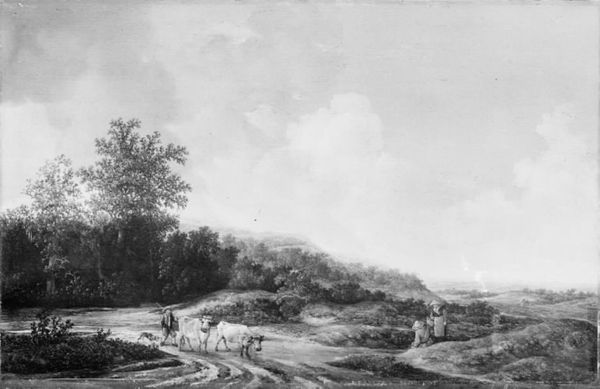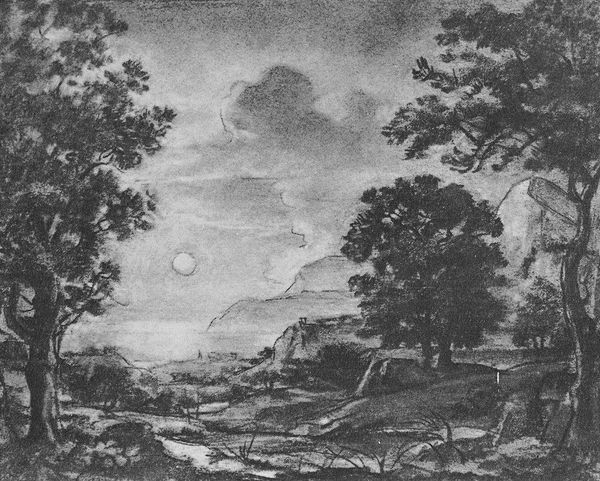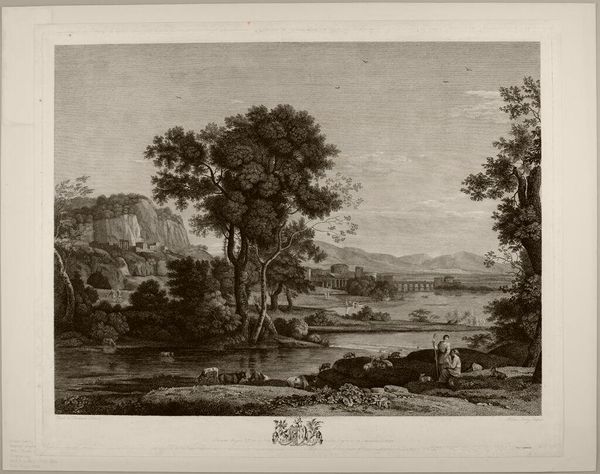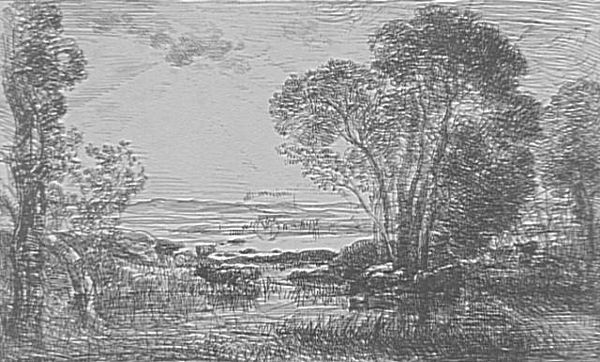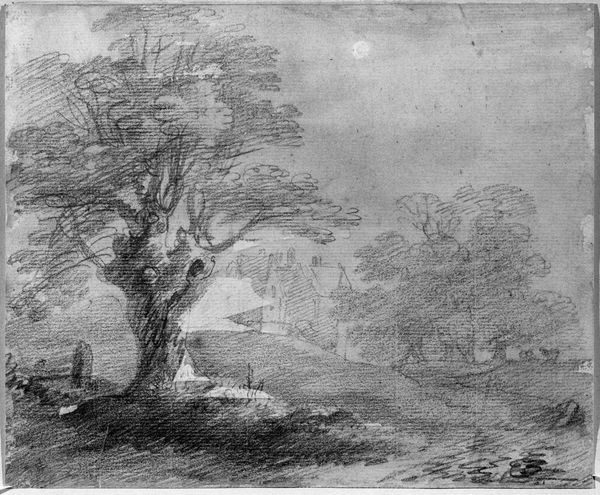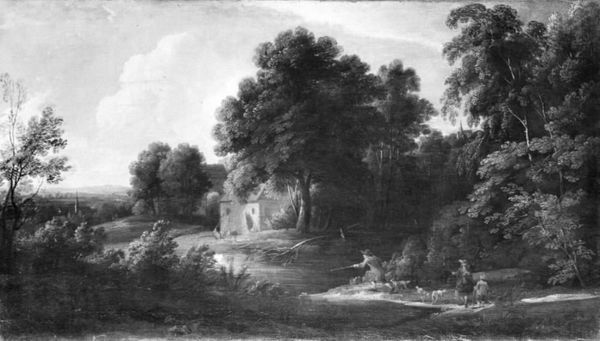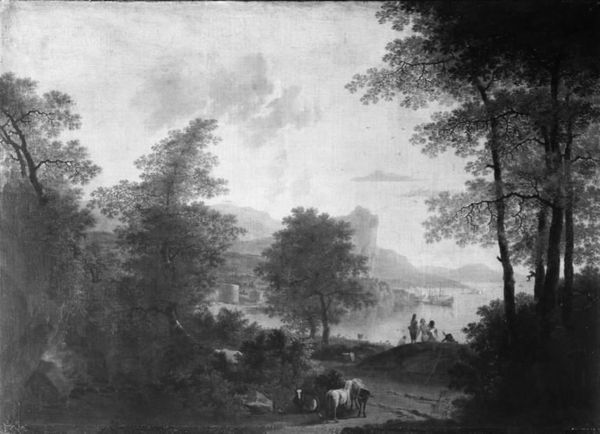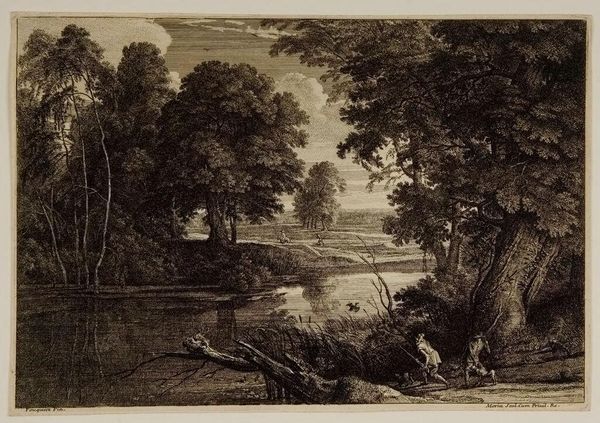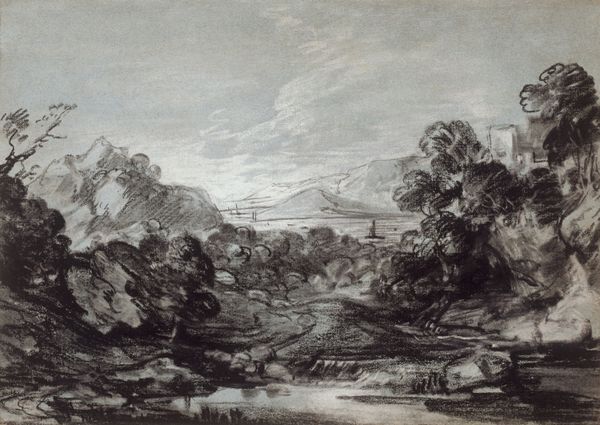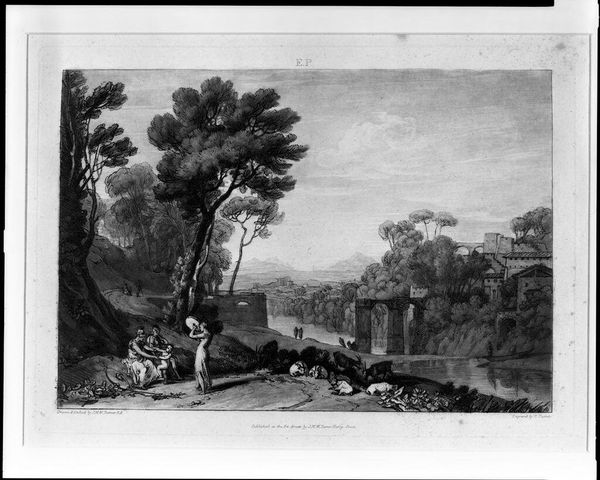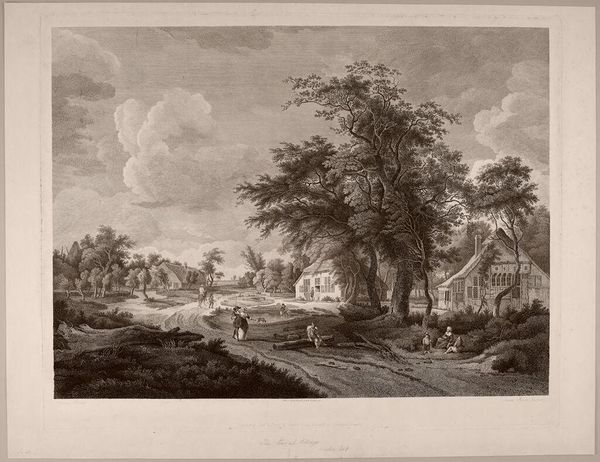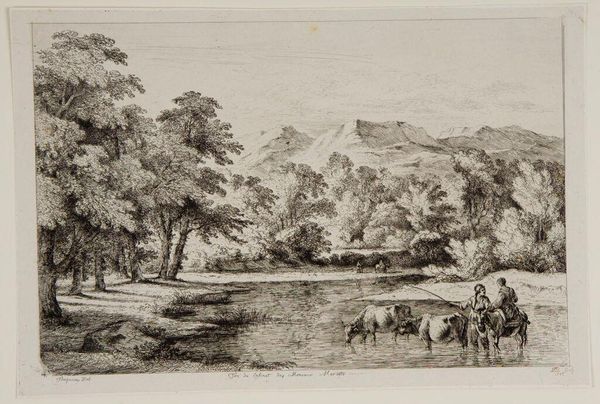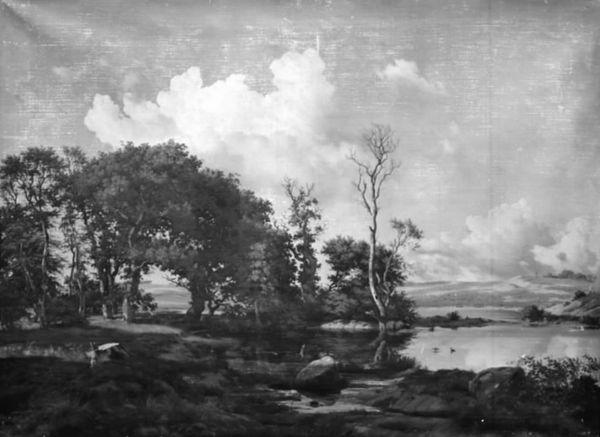
drawing, print, etching
#
tree
#
drawing
# print
#
etching
#
landscape
#
charcoal drawing
#
form
#
romanticism
#
line
#
genre-painting
#
history-painting
Copyright: Public domain
Curator: Here we have an etching simply titled "Landscape," by Thomas Gainsborough. Although undated, its style and printing information suggest it's from around 1797. Editor: It has such an evocative, almost mournful air. All those skeletal trees and turbulent clouds. You can practically feel the chill in the air. It's made by very simple materials but the effects created are strong. Curator: Indeed. Gainsborough, while famed for his portraits, had a lifelong love of landscape. He felt constrained by the demands of portraiture and frequently turned to landscapes, often created through etching or drawings, to indulge his creative spirit more freely. It gave him greater agency over his practice. Editor: That makes sense. Look at the way he's used etching here. Notice the layering of the lines, the varied pressure? It creates this incredible sense of depth and texture. I am mostly focused on the means of its production, the process of crafting an image with what seem like the most economical lines, yet suggesting all those tangible natural features. I see his love in it as it speaks of all the materiality. Curator: His interest in landscape also fits neatly within the rise of Romanticism and its celebration of the natural world as a space for both refuge and the sublime. One must acknowledge Gainsborough’s positioning and access to materials, studio and the rise of the London gallery scene which shaped his career. His position in those rising markets meant he had scope to focus on this genre painting. Editor: Romanticism really privileged the raw materials too. The emphasis was never solely on subject. Look how even in monochrome, he evokes the dampness of the earth, the roughness of the bark on the trees... Curator: And there's a human element, too— a reminder that the landscape wasn't simply 'discovered', but constantly reshaped and experienced through labor. Editor: Absolutely, it underscores how profoundly human intervention impacts the natural world and how closely landscape becomes connected to working lives. It does make me reflect upon its role in shaping Romanticism. Curator: It also provides a compelling snapshot into the 18th century and into our relationship with imagery from the past. It makes me think more about landscape tradition’s contribution to Britain's artistic legacy. Editor: And that so many can be achieved with some tools, an eye and lots of experimentation!
Comments
No comments
Be the first to comment and join the conversation on the ultimate creative platform.

